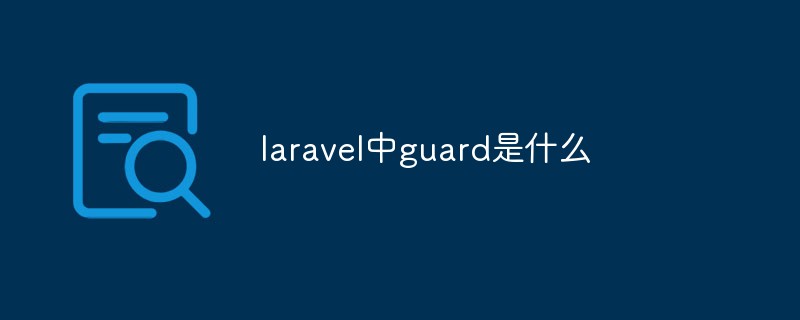This article mainly introduces you to the relevant information about the application of Redis in the Laravel project. The article introduces it in great detail through sample code. It has certain reference learning value for everyone to learn or use Laravel. Friends who need it can follow below. Let’s learn together.
Preface
This article mainly introduces to you the application examples of Redis in Laravel project, and shares them for your reference and study. The following words Without further ado, let’s take a look at the detailed introduction:
After a preliminary understanding of the application of Redis in Laravel, let’s imagine such an application scenario. If the statistics of the number of views of an article or post only increase each time One page view
will add a new data to the database. If the request is too large, it will consume the database. Then can we have other solutions
The solution here is that even if your website has a large number of requests, make changes in the cache every time a visit is added. As for refreshing the Mysql database, you can customize it to
how many minutes to refresh or access. When the amount reaches a certain amount, refresh the database so that the data is accurate and the efficiency is much higher than directly refreshing the database each time.
Now that the corresponding solution is given, we will start to implement it
Let's take the browsing of a post as an example. We first create the corresponding controller
$ php artisan make:controller PostController
and then generate the Model
we need to use.
$ php artisan make:model Post -m
Fill in the field content of the migration table of posts
Schema::create('posts', function (Blueprint $table) {
$table->increments('id');
$table->string("title");
$table->string("content");
$table->integer('view_count')->unsigned();
$table->timestamps();
});There is also the Seeder filling data of our test data
$factory->define(App\Post::class, function (Faker\Generator $faker) {
return [
'title' => $faker->sentence,
'content' => $faker->paragraph,
'view_count' => 0
];
});Define the access route of the post
Route::get('/post/{id}', 'PostController@showPost');Of course we still need to write our access, that is, the browsing event (in app/providers/EventServiceProvider Definition)
protected $listen = [ 'App\Events\PostViewEvent' => [ // 'App\Listeners\EventListener', 'App\Listeners\PostEventListener', ], ];
Execution event generation monitoring
$ php artisan event:generate
The relevant routing methods were defined before and now let’s implement them:
public function showPost(Request $request,$id)
{
//Redis缓存中没有该post,则从数据库中取值,并存入Redis中,该键值key='post:cache'.$id生命时间5分钟
$post = Cache::remember('post:cache:'.$id, $this->cacheExpires, function () use ($id) {
return Post::whereId($id)->first();
});
//获取客户端请求的IP
$ip = $request->ip();
//触发浏览次数统计时间
event(new PostViewEvent($post, $ip));
return view('posts.show', compact('post'));
}It can be seen here that using Redis as the cache driver will also obtain the obtained IP. The purpose is to prevent the same IP from being refreshed multiple times to increase the number of views
Similarly, each browsing will trigger the event we defined before and pass it into our post and id parameters
The naming of the Redis key is divided by: This can be understood as a hierarchical directory. It can be seen clearly in the visualization tool
The next step is to give the view file of our posts.show
<html lang="en">
<head>
<meta charset="utf-8">
<meta http-equiv="X-UA-Compatible" content="IE=edge">
<meta name="viewport" content="width=device-width, initial-scale=1">
<title>Bootstrap Template</title>
<!-- 新 Bootstrap 核心 CSS 文件 -->
<link rel="stylesheet" href="//cdn.bootcss.com/bootstrap/3.3.5/css/bootstrap.min.css" rel="external nofollow" >
<style>
html,body{
width: 100%;
height: 100%;
}
*{
margin: 0;
border: 0;
}
.jumbotron{
margin-top: 10%;
}
.jumbotron>span{
margin: 10px;
}
</style>
</head>
<body>
<p class="container">
<p class="row">
<p class="col-xs-12 col-md-12">
<p class="jumbotron">
<h1 id="Title-post-title">Title:{{$post->title}}</h1>
<span class="glyphicon glyphicon-eye-open" aria-hidden="true"> {{$post->view_count}} views</span>
<p>Content:{{$post->content}}</p>
</p>
</p>
</p>
</p>
<!-- jQuery文件-->
<script src="//cdn.bootcss.com/jquery/1.11.3/jquery.min.js"></script>
<!-- 最新的 Bootstrap 核心 JavaScript 文件 -->
<script src="//cdn.bootcss.com/bootstrap/3.3.5/js/bootstrap.min.js"></script>
<script>
</script>
</body>
</html>To initialize our event is to receive these parameters
class PostViewEvent
{
use Dispatchable, InteractsWithSockets, SerializesModels;
public $ip;
public $post;
/**
* PostViewEvent constructor.
* @param Post $post
* @param $ip
*/
public function __construct(Post $post, $ip)
{
$this->post = $post;
$this->ip = $ip;
}
/**
* Get the channels the event should broadcast on.
*
* @return Channel|array
*/
public function broadcastOn()
{
return new PrivateChannel('channel-name');
}
}The most important thing is to write our monitoring event:
class PostEventListener
{
/**
* 一个帖子的最大访问数
*/
const postViewLimit = 20;
/**
* 同一用户浏览同一个帖子的过期时间
*/
const ipExpireSec = 200;
/**
* Create the event listener.
*
*/
public function __construct()
{
}
/**
* @param PostViewEvent $event
*/
public function handle(PostViewEvent $event)
{
$post = $event->post;
$ip = $event->ip;
$id = $post->id;
//首先判断下ipExpireSec = 200秒时间内,同一IP访问多次,仅仅作为1次访问量
if($this->ipViewLimit($id, $ip)){
//一个IP在300秒时间内访问第一次时,刷新下该篇post的浏览量
$this->updateCacheViewCount($id, $ip);
}
}
/**
* 限制同一IP一段时间内得访问,防止增加无效浏览次数
* @param $id
* @param $ip
* @return bool
*/
public function ipViewLimit($id, $ip)
{
$ipPostViewKey = 'post:ip:limit:'.$id;
//Redis命令SISMEMBER检查集合类型Set中有没有该键,Set集合类型中值都是唯一
$existsInRedisSet = Redis::command('SISMEMBER', [$ipPostViewKey, $ip]);
//如果集合中不存在这个建 那么新建一个并设置过期时间
if(!$existsInRedisSet){
//SADD,集合类型指令,向ipPostViewKey键中加一个值ip
Redis::command('SADD', [$ipPostViewKey, $ip]);
//并给该键设置生命时间,这里设置300秒,300秒后同一IP访问就当做是新的浏览量了
Redis::command('EXPIRE', [$ipPostViewKey, self::ipExpireSec]);
return true;
}
return false;
}
/**
* 达到要求更新数据库的浏览量
* @param $id
* @param $count
*/
public function updateModelViewCount($id, $count)
{
//访问量达到300,再进行一次SQL更新
$post = Post::find($id);
$post->view_count += $count;
$post->save();
}
/**
* 不同用户访问,更新缓存中浏览次数
* @param $id
* @param $ip
*/
public function updateCacheViewCount($id, $ip)
{
$cacheKey = 'post:view:'.$id;
//这里以Redis哈希类型存储键,就和数组类似,$cacheKey就类似数组名 如果这个key存在
if(Redis::command('HEXISTS', [$cacheKey, $ip])){
//哈希类型指令HINCRBY,就是给$cacheKey[$ip]加上一个值,这里一次访问就是1
$save_count = Redis::command('HINCRBY', [$cacheKey, $ip, 1]);
//redis中这个存储浏览量的值达到30后,就去刷新一次数据库
if($save_count == self::postViewLimit){
$this->updateModelViewCount($id, $save_count);
//本篇post,redis中浏览量刷进MySQL后,就把该篇post的浏览量清空,重新开始计数
Redis::command('HDEL', [$cacheKey, $ip]);
Redis::command('DEL', ['laravel:post:cache:'.$id]);
}
}else{
//哈希类型指令HSET,和数组类似,就像$cacheKey[$ip] = 1;
Redis::command('HSET', [$cacheKey, $ip, '1']);
}
}
}Finally, you can check the specific effect through our tool

The above is the detailed content of Practical application examples of Redis in Laravel projects. For more information, please follow other related articles on the PHP Chinese website!
 laravel单点登录方法详解Jun 15, 2022 am 11:45 AM
laravel单点登录方法详解Jun 15, 2022 am 11:45 AM本篇文章给大家带来了关于laravel的相关知识,其中主要介绍了关于单点登录的相关问题,单点登录是指在多个应用系统中,用户只需要登录一次就可以访问所有相互信任的应用系统,下面一起来看一下,希望对大家有帮助。
 一起来聊聊Laravel的生命周期Apr 25, 2022 pm 12:04 PM
一起来聊聊Laravel的生命周期Apr 25, 2022 pm 12:04 PM本篇文章给大家带来了关于laravel的相关知识,其中主要介绍了关于Laravel的生命周期相关问题,Laravel 的生命周期从public\index.php开始,从public\index.php结束,希望对大家有帮助。
 laravel中guard是什么Jun 02, 2022 pm 05:54 PM
laravel中guard是什么Jun 02, 2022 pm 05:54 PM在laravel中,guard是一个用于用户认证的插件;guard的作用就是处理认证判断每一个请求,从数据库中读取数据和用户输入的对比,调用是否登录过或者允许通过的,并且Guard能非常灵活的构建一套自己的认证体系。
 laravel中asset()方法怎么用Jun 02, 2022 pm 04:55 PM
laravel中asset()方法怎么用Jun 02, 2022 pm 04:55 PMlaravel中asset()方法的用法:1、用于引入静态文件,语法为“src="{{asset(‘需要引入的文件路径’)}}"”;2、用于给当前请求的scheme前端资源生成一个url,语法为“$url = asset('前端资源')”。
 实例详解laravel使用中间件记录用户请求日志Apr 26, 2022 am 11:53 AM
实例详解laravel使用中间件记录用户请求日志Apr 26, 2022 am 11:53 AM本篇文章给大家带来了关于laravel的相关知识,其中主要介绍了关于使用中间件记录用户请求日志的相关问题,包括了创建中间件、注册中间件、记录用户访问等等内容,下面一起来看一下,希望对大家有帮助。
 laravel中间件基础详解May 18, 2022 am 11:46 AM
laravel中间件基础详解May 18, 2022 am 11:46 AM本篇文章给大家带来了关于laravel的相关知识,其中主要介绍了关于中间件的相关问题,包括了什么是中间件、自定义中间件等等,中间件为过滤进入应用的 HTTP 请求提供了一套便利的机制,下面一起来看一下,希望对大家有帮助。
 laravel的fill方法怎么用Jun 06, 2022 pm 03:33 PM
laravel的fill方法怎么用Jun 06, 2022 pm 03:33 PM在laravel中,fill方法是一个给Eloquent实例赋值属性的方法,该方法可以理解为用于过滤前端传输过来的与模型中对应的多余字段;当调用该方法时,会先去检测当前Model的状态,根据fillable数组的设置,Model会处于不同的状态。
 laravel路由文件在哪个目录里Apr 28, 2022 pm 01:07 PM
laravel路由文件在哪个目录里Apr 28, 2022 pm 01:07 PMlaravel路由文件在“routes”目录里。Laravel中所有的路由文件定义在routes目录下,它里面的内容会自动被框架加载;该目录下默认有四个路由文件用于给不同的入口使用:web.php、api.php、console.php等。


Hot AI Tools

Undresser.AI Undress
AI-powered app for creating realistic nude photos

AI Clothes Remover
Online AI tool for removing clothes from photos.

Undress AI Tool
Undress images for free

Clothoff.io
AI clothes remover

AI Hentai Generator
Generate AI Hentai for free.

Hot Article

Hot Tools

Zend Studio 13.0.1
Powerful PHP integrated development environment

mPDF
mPDF is a PHP library that can generate PDF files from UTF-8 encoded HTML. The original author, Ian Back, wrote mPDF to output PDF files "on the fly" from his website and handle different languages. It is slower than original scripts like HTML2FPDF and produces larger files when using Unicode fonts, but supports CSS styles etc. and has a lot of enhancements. Supports almost all languages, including RTL (Arabic and Hebrew) and CJK (Chinese, Japanese and Korean). Supports nested block-level elements (such as P, DIV),

Notepad++7.3.1
Easy-to-use and free code editor

ZendStudio 13.5.1 Mac
Powerful PHP integrated development environment

VSCode Windows 64-bit Download
A free and powerful IDE editor launched by Microsoft







